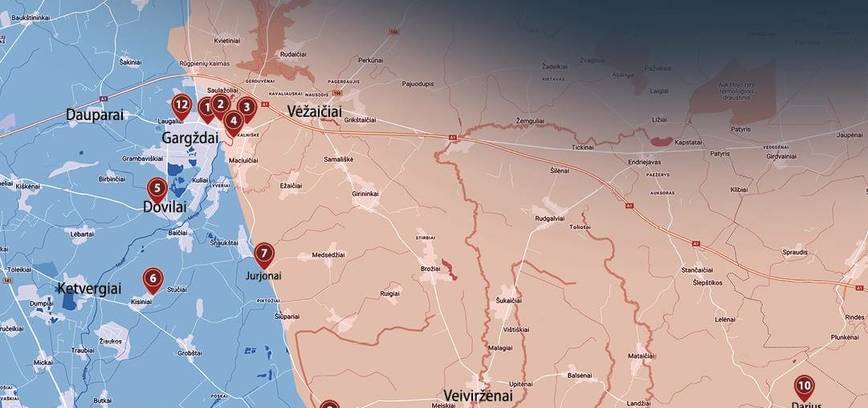Klaipėda District falls within the territories of two ethnographic regions of Lithuania Minor and Samogitia, which had quite different political, economic and cultural pasts. Although Western Baltic tribes lived in the vicinity of the present-day town of Gargždai before the formation of the Lithuanian state in the 13th century, the expansion of the Teutonic Order into the Eastern Baltic region radically changed the geopolitical situation and the ethnogenesis of local tribes. The situation returned to normal after the Treaty of Melnus of 1422, which established the state border between the Grand Duchy of Lithuania and the Teutonic Knights. Although the political structure and names of the states on both sides of the border changed over the centuries, or the states themselves changed, the border remained almost unchanged until 1923. Therefore, living on the territory of different states eventually led to the formation of culturally and economically distinct ethnographic regions of Lithuania Minor and Samogitia.
On the occasion of the centenary of the annexation of the Klaipėda Region to Lithuania, the Klaipėda District Tourism Information Centre has created a tourist and cultural route "Life on the fringes of ethnographic regions". The route consists of 12 selected sites most closely related to the former border, the presence of which over the centuries led to the formation of the ethnographic regions of Lithuania Minor and Samogitia. The western part of the Klaipėda District belongs to Lithuania Minor, while the eastern part belongs to Samogitia.
The itinerary is designed in such a way that both the guide and the individual tourist can make their own itinerary based on the list of attractions, and visit all the attractions or just a few selected ones as needed.
Objects along the route:
1. Klaipeda district tourism information centre
2. Gargždai Region Museum
3. Gargždai (Kalniškės) Mound
4. Monument to Border Captain Ipolitas Davidovičius Melechas
5. Dovilai
6. Kisiniai ethnographic cemetery
7. Old Evangelical Lutheran Cemetery of Jurjonai Village
8. Buildings of the former Pėžaičiai narrow-gauge railway station and customs
9. Skomantai Mound
10. Birthplace of the pilot Stephen Darius - museum
11. Plikiai
12. The building of the former Laugali narrow-gauge railway station, later customs


